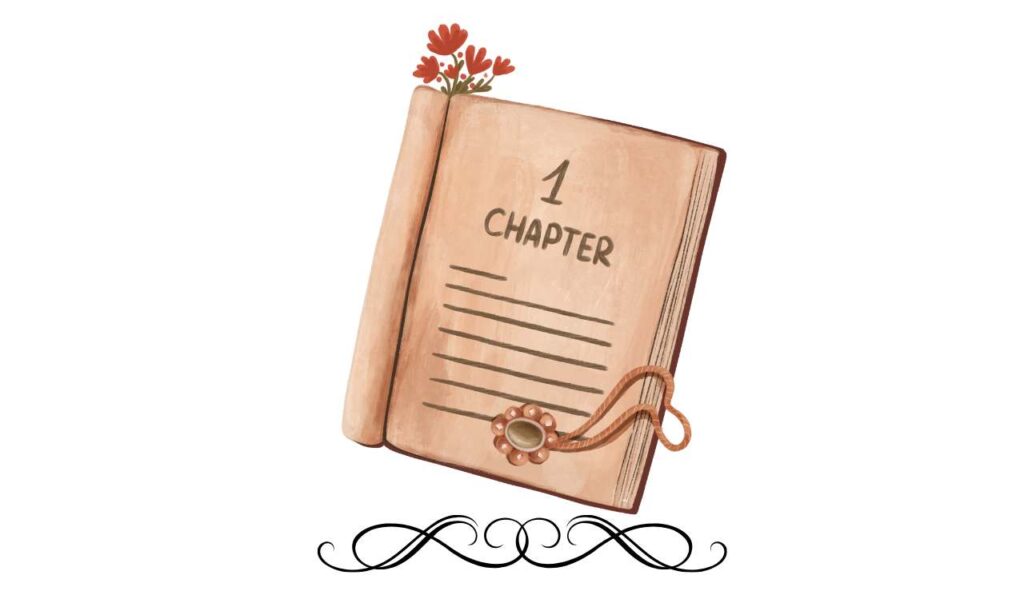When it comes to learning how to write a good first chapter, there’s no shortcuts. You need to understand what readers are searching for when they open a book to read. It’s the idea that they would see something more interesting than their lives. Why read a book that starts off with a cock crowing, or a birds flapping their wings, or the morning sun on my face? It’s the same as every other day in real life.
Readers search for a change, an interesting journey from someone they can imagine and by starting your first chapter with a promise that the lives of your main character is interesting enough for your reader, you make a good first chapter.
But I’m not going to leave it at that. Let’s talk about how you can actually write a good first chapter that readers will absolutely love.
Start With a Hook
It’s non-negotiatiable to start a book’s first chapter with a hook. Think of when you go fishing or what it would be like to go fishing. You pick up a bait, fix it on the hook and once the fish circles around and bites, you reel them in.
It’s the same concept for writing a good first chapter. What’s that one statement that would get a reader who opened your book while lying down to sit up and say “Holy shit! I better pay attention.”
It needs to be bold, needs to be out of the ordinary and most importantly, it needs to be memorable. Only when you ace all three of this will you know you’ve started your first chapter right.
Keep the Sentences Short
This is no hard rule, but it is good story writing. Keep it simple and short. Unless you’re writing books designed specifically for educative purposes, like my physics textbook in high school, you want to make sure that your sentences are not just simple but short.
Readers have low attention spam now, and especially if you’re choosing to publish your book in digital format as well. Picture how difficult it would be reading a huge chunk of texts all piled up together, versus reading simple, short lines broken down into multiple paragraphs.
Also, no one wants to open their dictionary or look up words on Google five times before they finish reading a thousand words.

Keep it Fast Pace
Action. More action. And even more action.
The point of your first chapter isn’t to tell us about your character’s backstory. Yes, you’d establish some personal connections but that only goes as far as their names, and something unique like a hardcore rule they stand by or something that says something about their current world tilting.
Readers always have a critical decision to make after your first chapter and that’s if they want to continue reading your book or not. So, you want to keep it fast paced, no too much stories about the scars they had when they were little.
You want to make your promise. A boy lived a relatively peaceful life. He woke up the the sounds of an ambulance one night and all his father says is “Go back to your room, lock the doors and don’t come out.” he hears things, and when he opens the door there’s silence.
This doesn’t reminscne on how his mother used to make him pancakes or any of the good life. No, it focus on the changes and everything that has been upsetted from what they used to be.
When you write your chapter, engross yourself in the thought of that action happening as it is. The things they see, feel and how everything they know is changing in the blink of an eye.
Keep it Short
Have you noticed that most stories that have prologues either have a slow and less active first chapter or a really long one and the prologue was just a way to help the readers make the decision to read?
Also, if you’ve noticed, these prologues are often short.
That’s because, if you were walking down the road one day and you see a dress you might like, and you walk in to ask the price of the dress but there are no attendants there to help with your inquiries. You don’t sit for hours waiting for them to come, you leave because at that point, the dress isn’t just worth it yet.
But if you’ve had on eyes on a dress and you know you would circle back to buy it, because you just have to own that pair. You’ve been searching all the stores and none of them had until now.
Even if it takes hours, you most likely will wait. Pissed but still you’d wait, because you’ve decided it’s worth the time.
Reading a book takes effort, and more time than buying a dress would, and at the first chapter, your readers have no emotional connection to your book yet, the jury is still out for whether they like it or not.
You don’t want to keep them waiting for too long.
End with a cliffhanger
Finally, when closing your first chapter, you need to leave your readers with something to think about. Think of yourself as a salesman who highlights all the possible issues you might be experiencing with your old tool. While you might not buy the new one immediately, if you pick up your old tool to use, you instantly remember all the troubles its put you through and suddenly, the new tool becomes more enticing.
Same with ending your first chapter. Even if at the beginning they decide they don’t like maybe your writing style or something about your story, ending the first chapter with a cliffhanger makes them think about your story over and over again until they just have to satisfy that curiousity.
Conclusion
And this, is how you write a good first chapter. To sum up all I’ve said, a first chapter is a promise you make to readers, and an argument as to why they should read your book. You need to present a strong but short case, and leave them with something to think about.
If you do all of these, then you’d have more people reading your books.
P.S.: For romance authors, check out my blog post on how to write romance novels.


